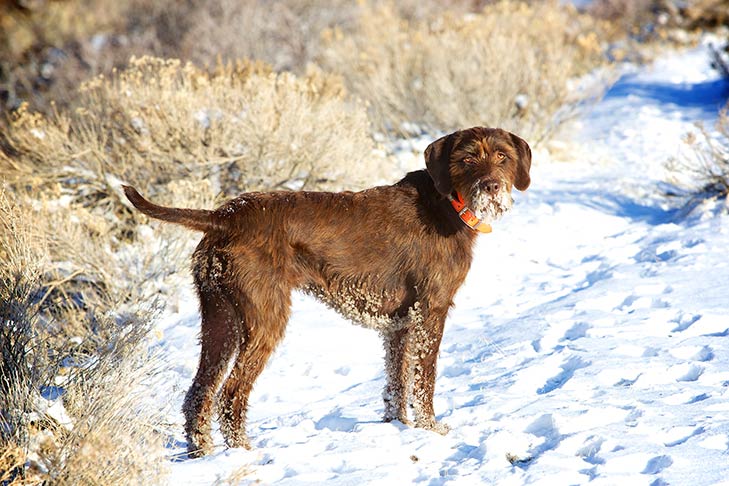The Pudelpointer is a pointing dog with a rough coat that descended from the Poodle and the Pointer. The goal of the breed was to produce a dog with the intelligence, love of water, retrieving instincts, ease of training, readiness to please, and protective coat of the Poodle and the endurance, inexhaustible hunting drive, birdiness, and field nose of the Pointer.
In order to create the new breed, a Poodle and an English Pointer were crossed for the first time in Germany in 1881. The sire was Tell, an English Pointer that belonged to Kaiser Frederick III, and the dam, Molly, a Poodle, belonged to Hegewald, a well-known Teutonic author on hunting dogs.
As a breed, the Poodle’s genes seems to have been more dominantly transmitted. To change this, a lot more Pointers than Poodles were added to the breeding program to create what is now known as the Pudelpointer. Only 11 Poodles were employed in the first 30 years of breeding, compared to far over 80 Pointers. After that initial period, the Pointer only needed to be reintroduced on occasion. The Pointer was introduced again to help replenish the breeding population after the breed suffered severe depletion after World Wars I and II.
In 1956, Pudelpointers were introduced for the first time in North America. The Pudelpointer Club of North America was established in 1977 in Canada after the Pudelpointer breed’s foundation was established.








 Health
Health Grooming
Grooming Exercise
Exercise Training
Training Nutrition
Nutrition